Best Underlayment For Solid Hardwood Floors (2024 Update)
Installing hardwood floors can greatly increase the beauty and value of your home. However, choosing the right underlayment is crucial for proper installation and long-lasting durability. Before purchasing underlayment, there are several key factors to consider.
First, examine the type of hardwood flooring you plan to install. Different woods have different requirements for underlayment thickness and material. Always follow the flooring manufacturer’s recommendations. Second, determine if you need a moisture barrier underlayment. This provides vital protection against water damage in basements or other damp areas.
You’ll also want to evaluate the underlayment’s sound dampening abilities. Quality underlayment helps muffle noise from footsteps and dropped objects. Underlayment thickness plays a role here – thicker options typically provide better sound insulation. Finally, consider the subfloor type. Underlayment must smooth any irregularities and create a flat surface for hardwood installation.
Choosing the best underlayment for your solid hardwood floors can be confusing. What thickness do you need? Should you install a vapor barrier? Which brand is the most reliable? By carefully researching products and evaluating your flooring needs, you can select the ideal underlayment for a successful installation. Reach out to flooring experts if you need guidance. Investing in quality underlayment now will pay dividends for years to come through improved stability, noise reduction, and moisture protection.
10 Best Underlayment For Solid Hardwood Floors
| # | Product Image | Product Name | Product Notes | Check Price |
|---|---|---|---|---|
|
1
|
Ideal for providing soundproofing and moisture protection underneath glue and nail-down flooring installations.
|
|
||
|
2
|
Ideal for use as an underlayment for laminate, engineered hardwood, and floating floors to protect against moisture.
|
|
||
|
3
|
This product is ideal for preventing fractures and cracks in bathroom flooring, ceramic tile, concrete, subfloors, tiles, and stone.
|
|
||
|
4
|
Quiet and moisture-resistant underlayment for laminate, vinyl, and hardwood flooring installations.
|
|
||
|
5
|
It is ideal for use as an underlayment under all types of flooring to provide extra insulation and soundproofing.
|
|
||
|
6
|
Ideal for use as a flooring underlayment to reduce noise and support cushioning.
|
|
||
|
7
|
Ideal for use as a sound and vibration absorbent material, gasket material, and cushioning in various applications.
|
|
||
|
8
|
This product is ideal for use as an underlayment for various types of flooring, including laminate, vinyl, hardwood, and more.
|
|
||
|
9
|
It is ideal for use as underlayment in flooring installations and various crafting applications.
|
|
||
|
10
|
This product is ideal for use as an underlayment for laminate flooring, providing sound reduction and moisture protection.
|
|
1. Silentshield: All-In-One Flooring Underlayment
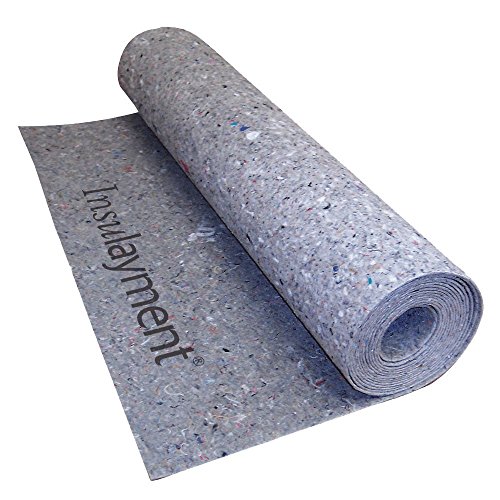
This flooring underlayment is a versatile solution for those seeking to install glue-down or nail-down wood flooring, or ceramic tile. Unlike other products, it does not have an attached vapor barrier, which allows for superior adhesion with wood-flooring adhesives and thin-set mortars. It is suitable for both commercial and residential use, offering a reliable and durable foundation for any type of flooring installation. With its exceptional quality and performance, this flooring underlayment is an excellent choice for anyone looking to achieve a long-lasting and flawless finish. So, if you're planning to install wood flooring or ceramic tile, look no further than this high-quality underlayment.
2. Eco Cork Foam Underlayment, 75 Sq. Ft. – The Only One With A Built-In 6 Mil Vapor Barrier
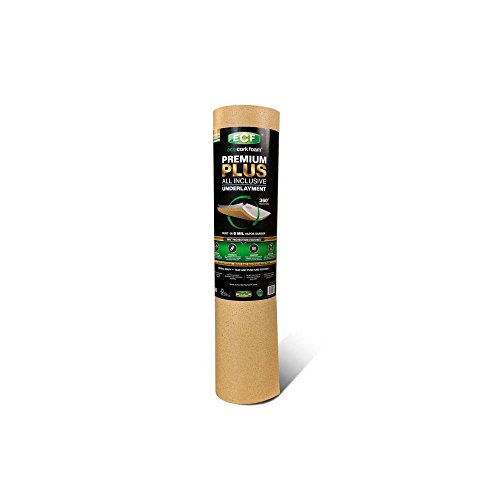
This product offers the highest level of moisture protection with its built-in 6 mil vapor barrier and a class 1 moisture vapor rating. It is designed to provide superior acoustical properties with an IIC rating of 73, STC rating of 66, and Delta IIC rating of 23. The product has been engineered with a 1/8" (3.2mm) thickness to provide stronger joints and more stable floors.
The product is known for its long-lasting comfort with a thermal insulation R value of 0.47 and radiant flooring approval. It is made from FSC certified cork and foam, which ensures that the product is environmentally friendly. The product is also designed to provide mold and mildew protection, which makes it suitable for use in areas with high moisture levels.
3. Anti-Crack 108 Sq Ft Tile Underlayment.
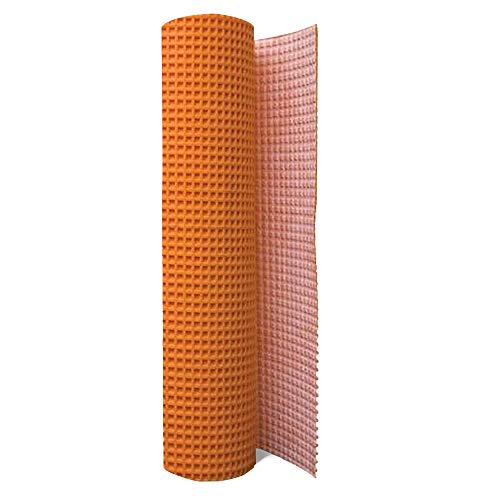
This uncoupling membrane underlayment is an essential tool for any ceramic or stone tile installation. It provides an uncoupling layer that prevents the transfer of stress and movement from the substrate to the tiles, protecting them from fractures and cracks. In addition to this, it also acts as an excellent moisture barrier underlayment, preventing water and moisture from seeping through the substrates.
Some substrates, such as plaster or plasterboard, lose their cohesive strength when they get wet, while wood substrates expand, resulting in cracked tiles and grout. This uncoupling membrane underlayment was invented to absorb the movement of the substrates, stop the transfer of stress, pressure, and movement to your tiles, and prevent tiling problems such as cracking, expansion, shrinkage, and water-sensitive substrates.
This uncoupling membrane waterproof underlayment also acts as an outstanding waterproofing layer that protects moisture-sensitive substrates like concrete, wood, metal, or asphalt. It is ideal for wet rooms and kitchens, basement flooring, bathroom tile and shower floors, and even sauna or steam rooms!
The waterproofing membrane floor underlayment rolls are lightweight and easy to carry, making them extremely easy to install using standard tools. Its grid structure and anchoring fleece laminated on the underside bonds well to a modified thin-set mortar and tiles can be immediately installed over the waterproof membrane underlayment. There is no need to wait for the mortar to cure. It is fast, simple, and hassle-free!
Protecting your home investment is crucial, and this uncoupling membrane underlayment provides an excellent precautionary measure. Nobody wants to install tiles over cracked floors, but what guarantee do we have that our newly-built concrete floors won't have cracks or fractures years after? Using an uncoupling membrane provides crack bridging and isolation, waterproofing, uncoupling, and vapor barrier, all for that perfect tile and stone installation.
4. Quietboard Eco Flooring Underlayment – 90 Sqft

The QuietBoard Subfloor Lift is an innovative solution that addresses the common issue of gaps between trim and flooring. This product effectively raises the subfloor, eliminating uneven floor level imperfections and reducing trip hazards in room to room transitions. With QuietBoard, you can save time and money that would otherwise be spent replacing door frames.
Beyond its subfloor lifting capabilities, QuietBoard also serves as a high rated sound barrier and energy-efficient insulation. Made from dense recycled fiber structures, this product absorbs high levels of both impact and ambient sound, while also maintaining room temperature through impressive R-Value energy insulation. This creates a harmonious living space by minimizing unwanted walking and room noises.
QuietBoard is equipped with an Eco-Wick waterproof system that allows its recycled fibers to hold up to 5X their weight in moisture while maintaining their shape and functionality. This feature creates a healthier living environment under the floors, as the fibers are treated to allow moisture vapors over concrete to breathe and prevent harmful droplets of water from becoming trapped.
The integrated metallicized film barrier in QuietBoard provides additional and powerful moisture protection for flooring above from water below, while also providing thermal reflection properties. This ensures that your floors remain protected from moisture damage.
Made in the USA with 100% recycled materials, QuietBoard's extremely dense panelboard construction increases floor stability and minimizes flex between planks, making floors solid and comfortable underfoot. Its durable and lightweight design doesn’t rip, tear, or crumble, reducing waste and ensuring your floor has complete, long-lasting coverage. This product satisfies credits under the LEED Green Building Program.
QuietBoard is approved for use with a variety of flooring coverings, including all Vinyl Planks, Glue Down Sheet Vinyl, All Vinyl Tiles, Laminate, Carpet/Carpet Tile, Floating & Glue Down Wood, Radiant Heat Systems, and Pad Attached Flooring. Its versatility makes it a popular choice for both residential and commercial applications.
5. Qep Natural Cork Underlayment Roll – 1/4" (6 Mm) – 200 Sq. Ft., 48" X 50' (72000q) , Brown
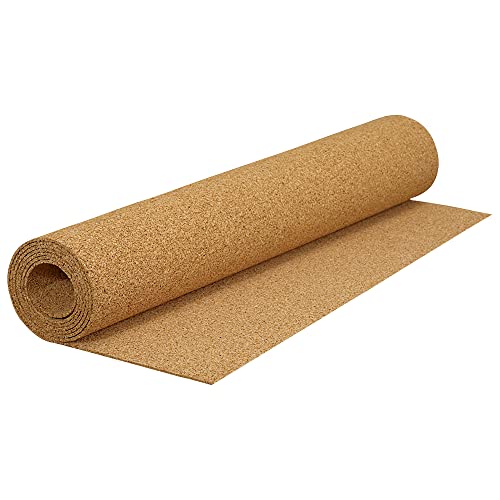
The crack isolation membrane is a versatile and reliable product that is ideal for use with ceramic and porcelain tile, stone, marble, engineered hardwood, and laminate floors. It is specifically designed to resist the transfer of stress cracks from the subfloor through to the flooring surfaces, ensuring that your floors remain in excellent condition for years to come.
In addition to its crack isolation capabilities, this membrane also provides exceptional acoustical sound control under ceramic tile and stone, reducing sound transfer throughout the room. Its easy-to-install design makes it suitable for both glue-down and loose-lay configurations, making it a convenient choice for any flooring project.
This product is constructed of natural cork, a renewable resource that makes it an eco-friendly choice for any home or business. It also reduces thermal transmission, increasing the effectiveness of floor heating systems and keeping your space comfortable all year round.
Each roll of this crack isolation membrane measures 200 sq. ft., providing ample coverage for any flooring project. With dimensions of 48 in. x 50 ft., it is easy to handle and install, making it an excellent choice for DIY enthusiasts and professionals alike.
6. Floorlot Fl-Lf-100 Litefoam Flooring Underlayment, White
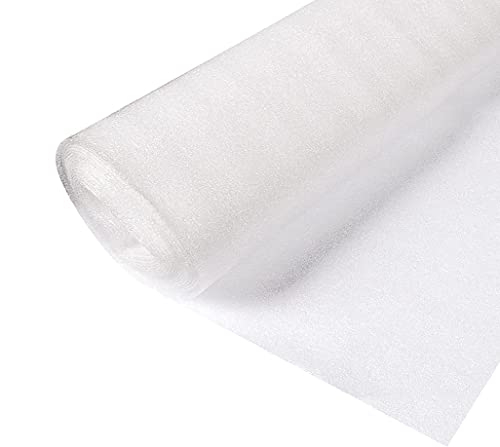
Looking for a reliable and cost-effective flooring underlayment? Look no further than this product! With its easy installation process, you'll have your floors prepped and ready for use in no time. Simply roll out the underlayment and connect the seams with tape – it's that easy!
This underlayment comes in a convenient roll size of 100 sq. ft., making it easy to measure and cut to fit your specific flooring needs. And at an affordable price, you can rest assured that you won't be sacrificing quality for cost.
This underlayment is designed to provide superior support and protection for laminate, engineered wood, and solid hardwood floor systems. So whether you're renovating your home or installing new floors, this underlayment is the perfect choice to ensure a smooth and durable finish.
Don't settle for subpar flooring underlayment – choose this high-quality option for a reliable and long-lasting solution. With its easy installation, affordable price, and versatile use, you can't go wrong with this product.
7. Cork Sheet, Underlayment, 2.5mm T, 24×36 In
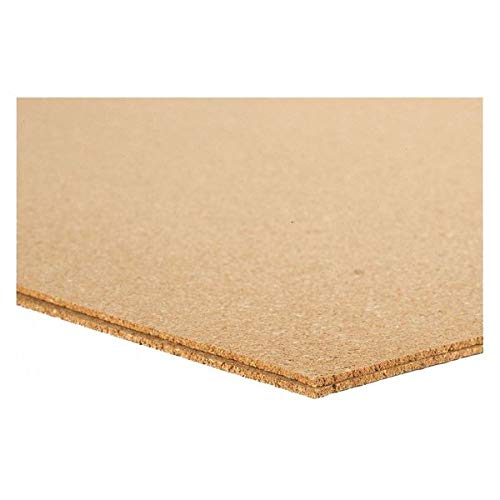
Introducing the Sheet Stock Underlayment, a top-quality product that is perfect for all your flooring needs. This cork underlayment is specifically designed to provide a reliable and durable foundation for any flooring installation.
With a length of 24 inches and a width of 36 inches, this underlayment offers ample coverage and can easily accommodate any flooring project. It boasts a thickness of 2.5mm, which is perfect for providing a solid, sturdy base for your flooring.
Made from high-quality cork, this underlayment is built to last and will provide excellent insulation and soundproofing for your floors. It is designed to withstand heavy foot traffic, ensuring that your floors remain protected and in top condition for years to come.
This sheet stock underlayment is manufactured with the highest standards of quality, ensuring that you get the best possible product. It is sourced from multiple countries, guaranteeing that you receive a product that is of the highest quality and meets all your flooring needs.
8. Produra 3-In-1 Foam Underlayment: Ultimate Flooring Upgrade.
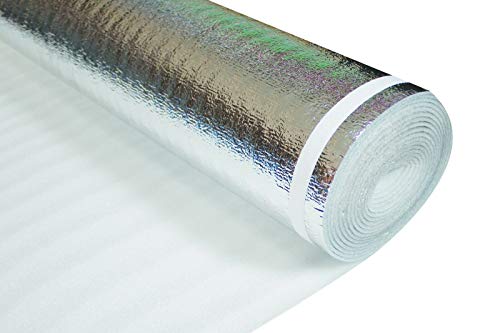
This flooring product is designed to provide an acoustic, quiet, and comfortable experience while walking or standing on your floor. It offers advanced thermal insulation that helps to keep your feet warm in winter and comfortable in summer.
This flooring has a premium vapor barrier that provides better water and moisture protection. The premium cell design ensures a stronger cell wall for a stronger product, and it offers better sound dampening as well.
Installation is made easy with the self-sealing Lip N Tape system, pre-attached tape (end to end), and 3" overlap. With a 3mm overall thickness, each package contains 400 sq. ft. of flooring.
9. Cork Sheet, Underlayment, 4.0mm T, 24×36 In
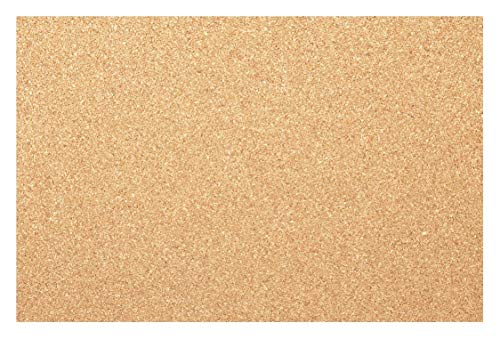
This sheet stock is a versatile underlayment that measures 24 inches in length, 36 inches in width, and 4.0mm in thickness. It is made of high-quality cork material, which makes it durable and long-lasting.
Designed to provide a reliable and stable foundation, this sheet stock is perfect for a wide variety of applications. Whether you are installing a new floor or need a protective layer for your existing one, this underlayment is an excellent choice.
One of the most notable features of this sheet stock is its cork composition. Cork is a natural and sustainable material that is known for its insulating properties. It provides excellent thermal and acoustic insulation, making it a great choice for homes and commercial buildings alike.
Another benefit of this sheet stock is its easy installation process. Simply cut it to size and lay it down as needed. Its 24-inch length and 36-inch width make it easy to work with, and its 4.0mm thickness ensures a stable and level surface.
This sheet stock is sourced from multiple countries, ensuring its high quality and reliability. It is a cost-effective solution that will provide years of reliable performance, making it an excellent investment for any home or business owner looking for a reliable underlayment option.
10. Soundguard Underlayment: Protect Your Laminate Floors
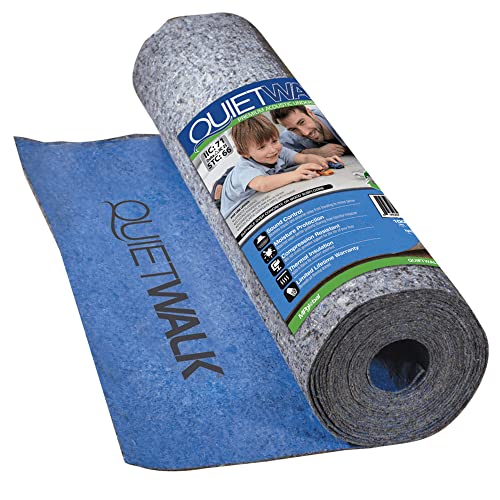
Introducing the Acoustical Floating Flooring Underlayment, designed to provide superior sound reduction and moisture protection for your floating floors. Whether you have laminate flooring, floating engineered wood, floating bamboo, floating rigid PVC core vinyl planks, or wood/plastic composite (WPC 5mm or thicker) floors, this underlayment is the perfect solution.
The underlayment comes in a large, 3- by 33.4-foot roll, providing 100 square feet of coverage. The recycled fibers used in this underlayment absorb sound and prevent it from traveling to other rooms, making click-together floating floors feel solid and secure underfoot. Additionally, the compression-resistant underlayment maintains its supportive shape over time and helps to smooth out any imperfections in the subfloor.
This underlayment also provides excellent moisture protection for your floors. The DriWick technology used in the underlayment prevents moisture damage by wicking away harmful moisture, while the attached vapor barrier protects the overlying concrete or wood flooring from any attacking moisture. The "breathable" fibers allow vapors to evaporate or travel down and away through subflooring, ensuring that your floors stay dry and protected.
The Acoustical Floating Flooring Underlayment provides great floor support and protection all year round. It provides insulation, additional comfort, and warmth during seasonal temperature changes, making it perfect for use in any home. This underlayment is also approved for use with in-floor heating systems, as it allows heat to permeate evenly while helping to protect the floor covering material from thermal shock.
This underlayment is not only good for your home but also for the environment. It is made from recycled materials and is certified clean and safe for indoor air quality with no VOCs or off-gassing from materials. So, if you're looking for an underlayment that provides superior sound reduction, moisture protection, and all-year-round floor support and protection, the Acoustical Floating Flooring Underlayment is the perfect choice for you.
Best Underlayment For Solid Hardwood Floors FAQs
Can underlayment help reduce noise from hardwood floors?
Yes, underlayment can help reduce noise from hardwood floors. Hardwood floors can create a lot of noise, especially in high traffic areas. The sound of footsteps, furniture being moved, and other noises can be amplified by the hardwood flooring. This is where underlayment comes in.
Underlayment is a layer of material that is placed between the subfloor and the hardwood flooring. It acts as a cushion and absorbs the sound and impact of footsteps, furniture, and other noises. It also helps to prevent the hardwood flooring from rubbing against the subfloor, which can create squeaks and other noises.
There are different types of underlayment that can be used depending on the type of hardwood flooring and the level of noise reduction required. Some examples include foam, cork, and rubber underlayment. It is important to choose the right underlayment for your specific needs in order to achieve the desired level of noise reduction.
Overall, underlayment can be an effective solution for reducing noise from hardwood floors. It is a cost-effective and easy-to-install option that can make a significant difference in the overall sound level in your home or office.
Can you install solid hardwood floors without underlayment?
Technically, solid hardwood floors can be installed without underlayment. However, there are several reasons why underlayment is highly recommended.
Firstly, underlayment provides a cushioning effect that helps to absorb sound and reduce noise transmission. Without underlayment, footsteps and other sounds can be amplified and echo throughout the room.
Secondly, underlayment acts as a moisture barrier that helps to protect the hardwood flooring from moisture damage. Without underlayment, moisture can seep through the subfloor and cause the hardwood to warp or buckle.
Lastly, underlayment can also help to level out any unevenness in the subfloor, creating a smoother surface for the hardwood to be installed on.
In summary, while it is possible to install solid hardwood floors without underlayment, it is highly recommended to use it for its sound-absorbing, moisture-barrier, and leveling properties.
Can you use the same underlayment for different types of hardwood floors?
Yes, you can use the same underlayment for different types of hardwood floors. However, it is important to select the appropriate underlayment based on the type of hardwood flooring you have.
For example, if you have solid hardwood flooring, it is recommended to use an underlayment that provides moisture protection. This is because solid hardwood floors are more susceptible to moisture damage compared to engineered hardwood floors.
On the other hand, if you have engineered hardwood flooring, you can use a variety of underlayment options such as foam, cork, or felt. The underlayment you choose will depend on the specific needs of your flooring project, such as sound reduction or moisture protection.
It is always recommended to consult the manufacturer's guidelines for both the hardwood flooring and the underlayment to ensure compatibility and optimal performance. Additionally, it is important to follow proper installation techniques to ensure a successful and long-lasting hardwood floor.
How do you choose the right underlayment for solid hardwood floors?
Choosing the right underlayment for solid hardwood floors is an important decision that impacts the longevity and quality of your flooring. The ideal underlayment for hardwood floors should provide a stable base for the flooring to rest on, prevent moisture from seeping into the wood, and reduce noise transmission.
When selecting an underlayment for a solid hardwood floor, consider factors such as the subfloor type, the thickness of the hardwood flooring, and the expected foot traffic in the room. Plywood is a preferred subfloor for hardwood flooring, and the underlayment should be suitable for use with plywood. A thicker hardwood flooring may require a thicker underlayment for enhanced support and durability. Moreover, high-traffic areas may require a thicker underlayment to absorb the impact of foot traffic and prevent damage to the flooring.
In addition, consider the type of underlayment material. Some common types of underlayment materials include foam, felt, rubber, and cork. Foam underlayment is suitable for reducing noise and providing a moisture barrier, while felt underlayment is ideal for reducing sound transmission and protecting against moisture. Rubber underlayment is an excellent choice for areas with high foot traffic and moisture-prone areas such as bathrooms, while cork underlayment is suitable for areas that require sound reduction and thermal insulation.
Overall, choosing the right underlayment for solid hardwood floors involves considering various factors such as subfloor type, thickness of the flooring, foot traffic, and underlayment material. A professional flooring contractor can aid in selecting the ideal underlayment that best suits your needs.
How do you install underlayment for solid hardwood floors?
Installing underlayment for solid hardwood floors is an essential step in ensuring that your flooring is stable and durable. Here's how to install underlayment for solid hardwood floors:
1. Acclimate the flooring: Before installation, acclimate the flooring in the room where you plan to install it. This will allow the flooring to adjust to the temperature and humidity of the room.
2. Clean the subfloor: Clean the subfloor to remove any debris or dirt that may interfere with the installation of the underlayment.
3. Lay the underlayment: Roll out the underlayment over the subfloor, making sure to overlap the seams by at least 6 inches. Use a utility knife to cut the underlayment to fit the room.
4. Secure the underlayment: Use a staple gun or adhesive to secure the underlayment to the subfloor. Make sure the underlayment is completely flat and smooth.
5. Install the hardwood flooring: After the underlayment is installed, you can begin installing the hardwood flooring according to the manufacturer's instructions.
By following these steps, you can ensure that your solid hardwood flooring is properly installed and will provide years of beauty and durability.
How much does underlayment cost for solid hardwood floors?
The cost of underlayment for solid hardwood floors varies depending on several factors such as the type of underlayment, the size of the area to be covered, and the location. Generally, the cost of underlayment ranges from $0.25 to $0.75 per square foot.
The most common types of underlayment used for solid hardwood floors are foam and felt. Foam underlayment is less expensive and usually costs around $0.25 to $0.35 per square foot. Felt underlayment, on the other hand, is a bit pricier and can cost around $0.50 to $0.75 per square foot.
It's important to note that some underlayment materials may have additional costs such as installation fees or moisture barriers. It's best to consult with a flooring professional to determine the most suitable underlayment for your solid hardwood floors and to get an accurate estimate of the total cost.
What are the benefits of using underlayment for solid hardwood floors?
Using underlayment for solid hardwood floors provides several benefits. Firstly, it acts as a cushioning layer between the subfloor and the hardwood, which helps to absorb sound and reduce noise transmission. The underlayment also helps to level out any small imperfections in the subfloor, ensuring a smoother and more even surface for the hardwood to be installed on.
Underlayment can also act as a moisture barrier, preventing any moisture from penetrating the subfloor and causing damage to the hardwood. This is particularly important in areas with high humidity levels or moisture-prone subfloors.
Additionally, underlayment can provide added insulation, helping to keep the room warmer in the winter and cooler in the summer. This can lead to energy savings and increased comfort for those in the room.
Overall, using underlayment for solid hardwood floors can improve the durability, longevity, and overall performance of the flooring. It is recommended to consult with a professional to determine the best type of underlayment for your specific flooring needs.
What are the different types of underlayment available for solid hardwood floors?
There are several types of underlayment available for solid hardwood floors. The most common types include felt paper, rosin paper, cork, foam, and rubber.
Felt paper is made from recycled materials and is commonly used as an underlayment for hardwood floors. It helps to reduce noise and absorb moisture. Rosin paper, on the other hand, is made from recycled paper and has a wax coating that helps to prevent moisture from seeping through the floorboards.
Cork is a natural material that is also used as an underlayment for hardwood floors. It is an excellent sound absorber and provides a cushioning effect on the floor.
Foam is a synthetic material that is commonly used as an underlayment for floating floors. It provides a cushioning effect on the floor and helps to reduce noise.
Rubber is another synthetic material that is used as an underlayment for hardwood floors. It provides excellent sound absorption and helps to reduce noise.
When selecting an underlayment for your solid hardwood floor, it is important to consider factors such as moisture control, sound absorption, and cushioning. Consulting with a flooring professional can help you determine the best type of underlayment for your specific needs.
What is the best underlayment for solid hardwood floors?
When it comes to solid hardwood flooring, choosing the right underlayment is crucial for ensuring longevity, comfort and soundproofing. The best underlayment for solid hardwood floors depends on several factors such as the subfloor type, the environment and the level of noise reduction needed.
One of the most common types of underlayment used for solid hardwood floors is felt paper. Felt paper is an organic material that is made from recycled fibers and it helps to absorb moisture and reduce friction between the subfloor and the hardwood. It also helps to reduce noise and acts as a vapor barrier.
Another popular option is cork underlayment. Cork is a natural material that is both eco-friendly and durable. It provides excellent sound insulation and can help to reduce noise levels by up to 10 decibels. Cork is also resistant to moisture, mold and mildew, making it a great choice for areas with high humidity.
Rubber underlayment is another option for solid hardwood floors. It is a good choice for those who are looking for high levels of sound insulation and comfort underfoot. Rubber underlayment is also resistant to moisture and can help to prevent mold and mildew growth.
Ultimately, the best underlayment for your solid hardwood floors will depend on your specific needs and preferences. It is important to consult with a flooring professional to determine the best underlayment for your specific situation.
What is the recommended thickness for underlayment for solid hardwood floors?
The recommended thickness for underlayment for solid hardwood floors is typically around 15 pounds per square foot. This thickness provides a strong and stable base for the hardwood flooring to be installed on and helps to minimize any potential movement or shifting of the floorboards. However, it is important to note that the thickness and type of underlayment needed may vary depending on the specific type of hardwood flooring being installed, the subfloor, and the overall conditions of the room. It is always best to consult with a flooring professional or the manufacturer’s recommendations to ensure the proper underlayment is used for the specific installation. Additionally, proper installation of the underlayment is crucial to the overall success and longevity of the hardwood floor, so it is important to follow all installation instructions carefully.







